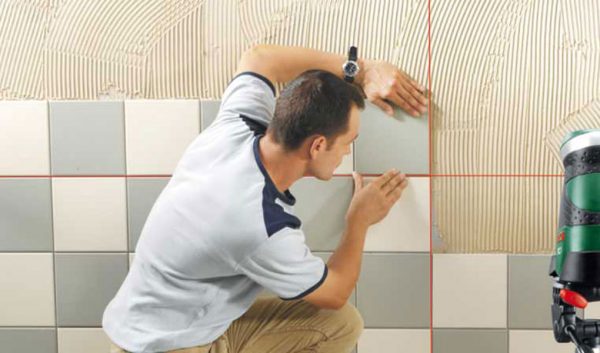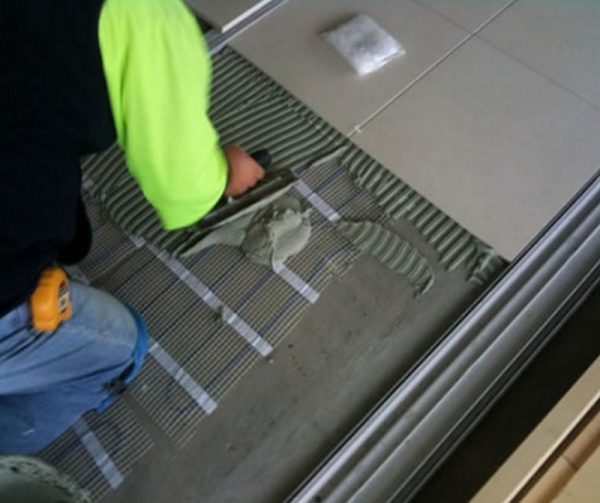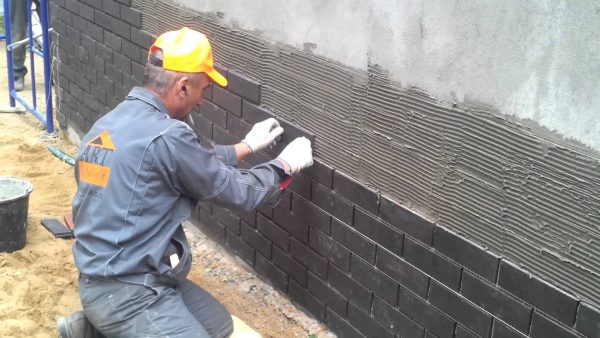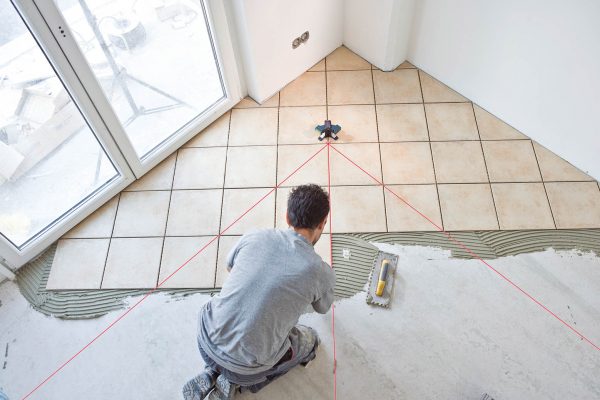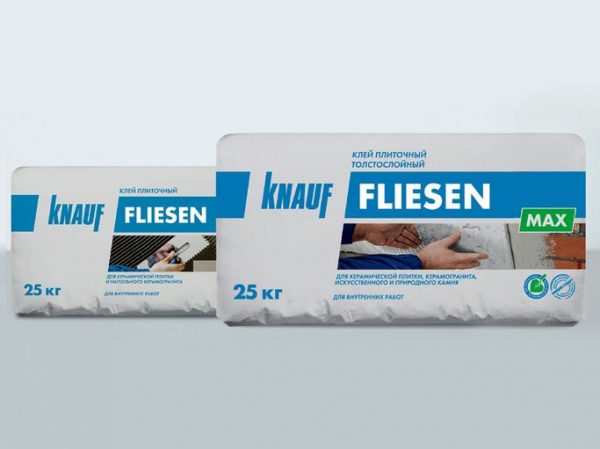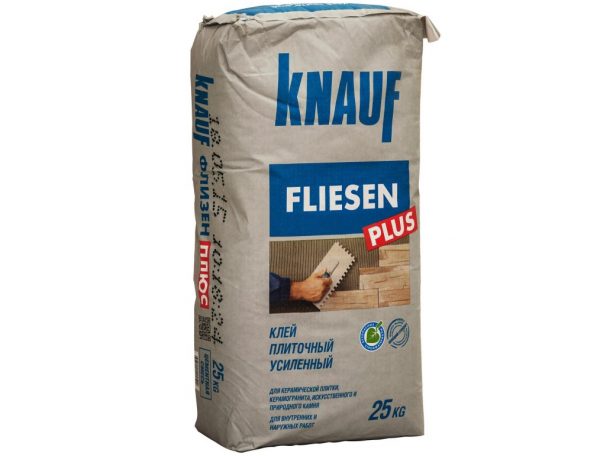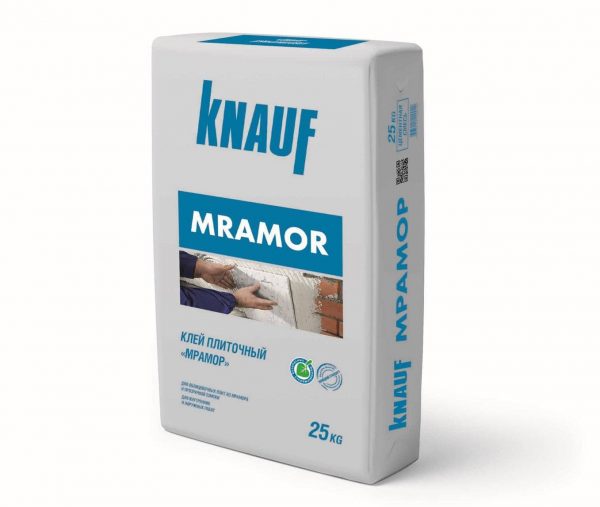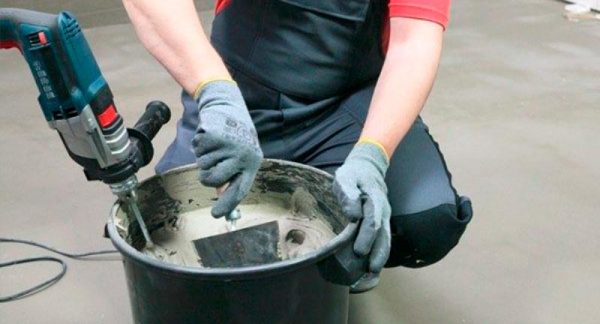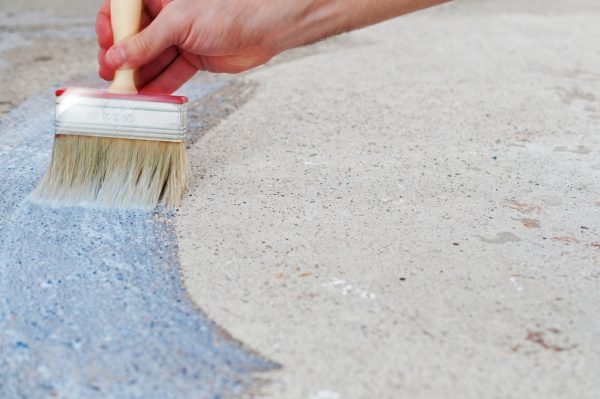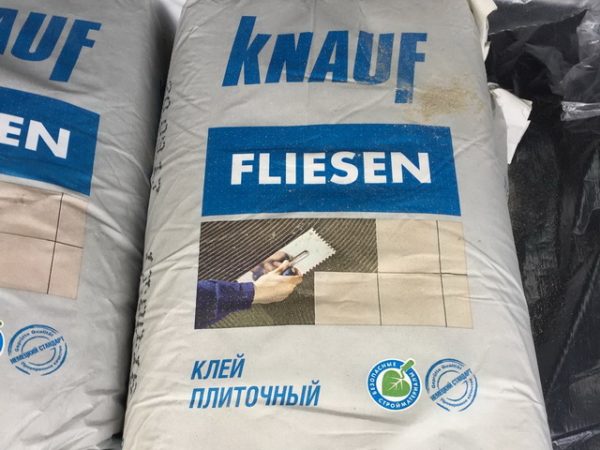For tile masonry, it is important to choose the right glue - one that has a high degree of adhesion to the surface and has excellent performance characteristics. It is such a tool that will guarantee the durability of the finish and will not cause any complaints from the user. Knauf Fliesen tile adhesive belongs to just such means: it has excellent adhesive properties, and is also safe for humans and the environment.
- Scope and features
- Specifications
- Composition and properties
- Pros and cons
- Types and forms of release
- Universal adhesive
- Fleece Flex
- Glue "Flizen Plus"
- "Flizen Marble"
- Comparison with other analogs of the line
- Application and consumption
- Breeding
- Preparatory work
- Glue application
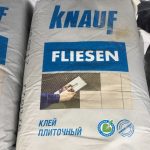
Scope and features
Knauf Fliesen glue from Knauf (the country of origin of the company is Germany) is a dry mortar, which after dilution turns into a high-quality mortar. This tool can be used for tiles of any size, clinker and porcelain stoneware, mosaics and tile blocks (depending on the particular type of glue). The composition has proven itself best for tiles up to 30 * 30 cm in size with water absorption greater than 3%, porcelain stoneware up to 60 * 60 cm, any floor ceramic coating.
Also, the tool is well suited for fixing the following insulation and finishing materials:
- polystyrene;
- Styrofoam;
- glass wool;
- polyurethane;
- glass magnesium sheet.
The adhesive has a high degree of adhesion to various substrates: concrete, cement, limestone coatings, tongue-and-groove and cement-bonded particleboards, silicate materials, masonry, as well as drywall, gypsum fiber. The versatility of the adhesive is confirmed by the ability to apply it for external and internal work. Knauf glue is also suitable for mounting a warm floor, other types of cladding with heating, as it easily withstands temperature fluctuations. A feature of Knauf Fliesen is its rather low consumption per m2, which is due to the possibility of applying it in a thin layer.
to contents ↑Specifications
Glue "Knauf Fliesen" has all the necessary certificates, which reflect its basic characteristics. Here are the technical parameters of the tool:
- adhesion with a standard concrete base - 0.6 MPa;
- temperature when applying the solution - from +5 to +25 degrees;
- operating temperature - from -45 to +80 degrees;
- the time of complete drying of the solution before operation is 2 days, before trowelling - 1 day, until the possibility of high mechanical loads - 7;
- the pot life of the solution is 2.5 hours;
- the period of adjusting the position of the tile is 10 minutes;
- possible thickness of the adhesive layer - 2-6 mm;
- frost resistance - up to 50 cycles of freezing / thawing;
- Shelf life - 1 year in the absence of violations of the integrity of the package, in compliance with the conditions recommended by the manufacturer.
Composition and properties
The base is “Flizen” glue from “Knauf” - cement, fine sand (the latter acts as a binder), which give the powder a gray color.To improve the quality and performance characteristics, special additives were introduced into the composition, fillers - polymers, additives, anti-mold and antiseptic components. The adhesive is designed in such a way that it is ideally suited for absorbent materials and relatively flat substrates. If the tile is poorly absorbing moisture, it is worth choosing a different composition from Knauf.
The main properties of the adhesive:
- Due to the density, the product does not slip from the wall and can hold even heavy plates, blocks, stone elements. Nevertheless, to ensure the declared level of adhesion, it is important to observe the temperature regime recommended for work and subsequent operation.
- The adjustment time is not high, so you can not immediately apply the product to large areas. If you put the tiles on the already dried glue, the adhesion quality will decrease.
- The glue is plastic, it is easy to apply and can be used on substrates with small pits, defects. The elastic structure will not allow the product to break down over time, and also contributes to the uniform filling of problem areas with glue.
- Due to its high frost resistance, the Knauf Fliesen compound is widely used for outdoor applications. After thawing, the adhesive seam will retain its characteristics and will not begin to collapse faster. Glue is suitable even for laying tiles on terraces, steps, balconies, verandas.
- Moisture resistance makes it possible to use glue in rooms with a high level of humidity. It is suitable for laying tiles in the bathroom, in the kitchen, etc. In addition, the adhesive layer provides waterproofing of hygroscopic mineral bases and protects them from infection by fungus, mold, bacteria.
to contents ↑For the cultivation of glue, you do not need to have special knowledge, the entire instruction is detailed on the packaging. It is only important to observe the proportions recommended by the manufacturer, and then use the resulting solution correctly.
Pros and cons
The advantage of the adhesive is its suitability for a wide variety of substrates, excellent compatibility with most insulating materials. Also, the tool is suitable for a variety of types of tiles, mosaics. Only for glass and transparent tiles the standard Flizen adhesive is not suitable because of its gray color.
Other advantages of the mixture:
- you don’t need to be a master to work, just read the instructions carefully;
- Thanks to the self-leveling effect, gluing tiles to the floor is easy;
- due to the low fluidity, problems with gluing elements to walls will also not occur;
- the tool allows you to align surfaces with height differences of up to 2 mm, which helps to reduce the list of repair work;
- glue hides microcracks in the screed, perfectly corrects the plane, promotes the formation of a monolithic surface;
- the product has a long service life, the tile does not have to be changed often, even that located on the street and in unheated rooms;
- under intense loads (including dynamic), the finishing material will not deteriorate, the adhesive layer will not collapse;
- the solution is plastic, therefore the tile does not need to be soaked in water before work.
The glue is sold in convenient packaging, and a bulk pack (25 kg) has a better price, and is more often used by craftsmen to save money when carrying out a large amount of work. The disadvantages of the solution are few. It requires the preparation of the substrate before work, as well as compliance with a certain temperature regime, otherwise the adhesion is reduced. The correction time is also quite low (10 minutes). For beginners, this can cause problems, especially if you immediately apply the product on several square meters of the base.
to contents ↑Types and forms of release
The Knauf company produces several types of glue: "Flizen Universal", "Flizen Plus with a strengthened formula", "Flizen Flex", "Flizen Marble". They have much in common, but there are also differences: in the thickness of the adhesive layer, the possibility of laying tiles of different sizes.
Also in stores there is glue “Knauf Fliesen Max” - a thick-layer material that can be applied with a layer of up to 3 cm, when increased masonry strength is required. In addition, "Flizen Max" makes it possible to level the floor and walls, while this glue is not suitable for underfloor heating systems.
The forms of release of all funds are durable paper bags of 10 and 25 kg, having several levels of protection. It is worth storing glue on wooden pallets in dry rooms.
to contents ↑Universal adhesive
This composition is a classic Knauf Fliesen glue, which is used indoors for tiles with water absorption of up to 3%. For outdoor work, this figure should be higher - from 5%. Best of all, the adhesive comes in contact with concrete, drywall, cement-sand substrates, plastered surfaces. You can not use it for low-porous tiles, because their coefficient of water absorption is too low.
to contents ↑Fleece Flex
This glue is more flexible, ductile compared to the previous version. It is also used for porous, medium-porous tiles, stone dies and porcelain stoneware. "Flizen Flex" is suitable for any substrates, including insulating materials. The glue is especially effective where significant dynamic loads are expected. It is also widely used for cladding wooden substrates, particleboard surfaces, for mounting a warm floor.
to contents ↑Glue "Flizen Plus"
Knauf Fliesen Plus is another tile adhesive with improved strength characteristics. This is achieved by adding mineral fillers and special polymers. The product has the highest level of adhesion with concrete, cement screed, drywall. It is well suited even for tiles with low water absorption and various types of stone, it is frost-resistant, and is used for decorating building facades and socles. The total load per 1 square. m. facing, made with "Fleece Flex" may be 50 kg.
to contents ↑"Flizen Marble"
Such glue is white in color, because it is created on the basis of white cement and minerals, polymers. Due to its reliability and a high level of adhesion, the product is suitable for facing various substrates with natural and artificial stone, granite, porcelain stoneware, mosaics and ceramics, glass tiles. To enhance the adhesion of large-format products, Flizen Marble is recommended to be applied to the base and to the tile itself.
to contents ↑Comparison with other analogs of the line
Comparing all varieties of Knauf adhesives for tiles, it’s easy to spot the differences. They are associated with the constituent additives, which determine the properties of the material and its purpose. So, for the installation of a warm floor, professionals use "Flizen Flex", which is not afraid of temperature changes. This glue is also great for laying industrial floors and other substrates that are subject to severe loads.
to contents ↑The universal composition “Flizen Knauf” is rarely used for porcelain stoneware; it is better to buy it for laying ordinary tiles. It is advisable to acquire Flizen Marble so as not to violate the aesthetic properties of decorative and artistic tiles. "Flizen Max" should be used with an uneven base, which has differences and requires prior alignment. "Flizen Plus" is usually used for finishing low-porous porcelain tiles.
Application and consumption
The consumption of the finished solution depends on the type of spatula, the quality of the preparation of the base, the calibration of the tiles. The maximum size of the layer is 6 mm, and without taking into account possible material losses, the flow rate will be approximately as follows:
- tiles less than 10 cm in size, trowel tooth height up to 4 mm - 1.7 kg / sq. m .;
- tiles with a size of 10-20 cm, the height of the trowel tooth up to 6 mm - 2.2 kg / sq. m .;
- tiles larger than 20 cm, the height of the trowel tooth up to 8 mm - 2.9 kg / sq. m
to contents ↑The size of the tooth of the tool is designed for the smooth back of the plates. If it is embossed, then a spatula with a larger tooth size should be purchased.
Breeding
Glue "Knauf" must be diluted in strictly defined proportions. For 1 kg of dry building mix, 0.25-0.3 liters of water will be required, that is, about 7-7.5 liters of liquid are needed for a 25 kg package. It is necessary to pour a measured amount of cold water into the container, then pour the powder and mix the mass well with a construction mixer, drill with a special nozzle. Kneading is done until the solution becomes homogeneous, no lumps remain in it. Next, the finished solution must be covered. After 5 minutes, mix it again, after which it can be used as directed. After 2.5 hours, the solution will begin to lose its properties, so the volume that can be processed during this time should be kneaded. Too thickened mass is mixed with a mixer, but water is not added.
to contents ↑Preparatory work
During decoration, the temperature regime must be strictly observed. You cannot work with Knauf adhesives in hot weather, as well as at temperatures below +5 degrees. To stick the tiles, you need to prepare the tools: a notched trowel and a trowel. The base is also important to bring in due form:
- clean from dirt, dust;
- wipe formwork lubricant from concrete;
- degrease with solvents, household cleaning products;
- remove old, peeling finishing material;
- wash off water-based and any other non-waterproof paint; if the paint is resistant to water, it can simply be sanded;
- allow the surface to dry well (the composition should not be applied to wet structures);
- turn off the heating system when installing a warm floor 24 hours before work.
The surface of the gypsum screed and the zone of possible contact with water must be waterproofed. The thickness of the plaster layer under the tile should not be more than 1 cm (maximum one layer). If highly absorbent substrates are to be finished, they must be pre-treated with a primer. It is advisable to take compatible Knauf Grundirmittel soil, which is pre-diluted with water in a ratio of 1: 4. For moderately absorbent substrates, the Knauf Tiefengrund primer is best suited.
to contents ↑Glue application
First, glue is taken with a trowel, put the right amount on the smooth side of the spatula. Distribute it evenly on the surface of the base, then spend it on the adhesive layer with the toothed side of the tool. Up to 80% of the surface should remain covered with glue, so adhesion will be sufficient. This is checked as follows: the tile just laid is removed, the back side is examined, the amount of glue is estimated. If it is not enough, take a spatula with larger teeth or apply glue to both the base and the tile. It is mandatory to glue both surfaces if tile laying is carried out outdoors.
Within 10 minutes, you can change the position of individual elements. They need to be well pressed to the base to securely lock. If a crust appears on the solution, it is removed manually. If glue gets on the front side of the plates, it is rubbed with a damp sponge, a cloth until it hardens. Recommendations for working with Knauf Fliesen:
- the higher the air temperature, the lower the working time with the solution;
- Do not allow the rays of the sun to enter, drafts during work;
- high humidity increases the period of possible work with glue;
- you can not add to the adhesive solution a liquid other than water;
- when performing work on the street or on large areas, it is important to provide for expansion joints;
- Rinse the tools immediately after use.
“Knauf” contains cement, therefore, during the mixing of the solution, it is necessary to protect the eyes and respiratory tract. When working with tiles, gloves should be used to prevent the solution from getting on the skin. If the product has penetrated the eyes, they should be washed, then seek medical help.

